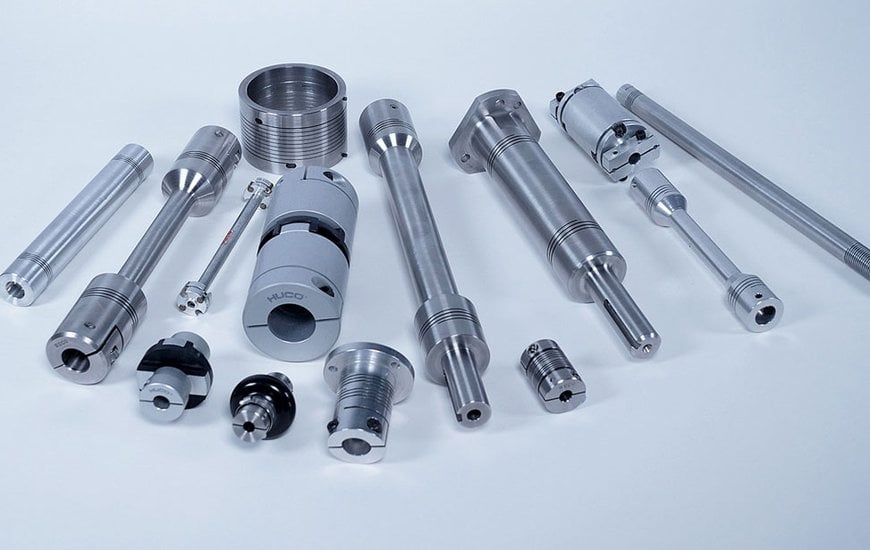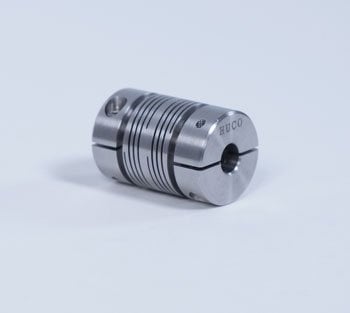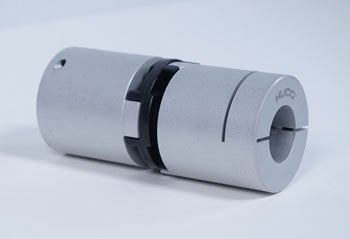www.industryemea.com
26
'21
Written on Modified on
Coupling Considerations for Designers
For designers, spending time selecting the perfect coupling may be low on the priority list. However, ensuring an efficient and reliable connection between two shafts is paramount for system reliability and to avoid any costly redesigns. Huco, a leading brand of Altra Industrial Motion Corp., offers a comprehensive range of standard and customised couplings designed for most applications.

David Lockett, Managing Director at Huco, explores the considerations for designers when specifying couplings.
The right time to think about couplings
While sometimes overlooked compared to motors, gearboxes, clutches etc., specifying a suitable coupling solution can have a major impact on the overall performance of the powertrain. Once the main elements of the powertrain have been specified it’s important to review coupling options to see how the relative performance of different styles may complement your overall design.
When development schedules are tight designers may be tempted to specify the most easily available coupling type. This may be a false economy as the wrong coupling could lead to problems including premature wear of components, poor efficiency, vibrations, or inadequate torque to turn the shaft and coupling. In any case, this necessitates a costly and time-consuming redesign process.
Accommodating misalignment
Misalignment is the variance between the ideal and actual position and attitude of the two shafts. Depending on the situation, couplings may have to accommodate angular, axial and radial misalignment. Misalignment is often caused by manufacturing tolerances, but in application can be further affected by thermal imbalances, wear, settlement and creep.
The optimal method to gauge misalignment between two shafts is to measure the system when it is at operating temperature and when cold. Assessing the tolerances of other individual elements of the powertrain is also instructive. Failure to accommodate misalignment can increase the wear of associated components such as motor bearings and shorten coupling service life.
Typically, as misalignment increases, the torque capacity and service life of the coupling will decrease. Accommodating higher levels of misalignment generally requires a longer coupling. For example, a Bellows coupling with an increased number of bellows will accommodate higher degrees of angular misalignment. Radial misalignment can dramatically influence the length of a coupling, as it must bridge two angles to join the shafts. However, certain coupling designs can break these rules. Huco Oldham and UniLat couplings offer designers the opportunity to accommodate large amounts of misalignment within a compact space.
Generally, introducing increased coupling flexibility to accommodate misalignment reduces the accuracy of positioning. The key for design engineers is to strike a balance between these two factors based on the demands of the application.

Understanding torque
To improve the torque rating of a coupling, generally it will need to increase in size. Of course, materials and design also have an influence. A stainless-steel Bellows coupling, size-for-size, will offer increased torque capacity compared to an Oldham coupling. This is because the Oldham design features an internal plastic disc that limits its torque capacity.
Another consideration is how torque is being applied in the powertrain. The catalogue torque rating of a coupling is based on its performance operating at a constant speed in a single direction. However, if you introduce acceleration, deceleration or changes in rotational direction into the application you reduce the torque capacity of the coupling. For example, a coupling with 10 Nm torque rating will drop down to 3 or 4 Nm with acceleration or deceleration in alternating directions. In such applications – such as robotics or pick-and-place machines – a larger size of coupling is needed.
Torsional stiffness
This is the measure of resistance to torsional rotation in a coupling. High torsional stiffness is important for applications where a high signal integrity or positional accuracy is required. Conversely, reduced torsional stiffness plays an important role when accommodating increased misalignment or when torsional damping against shock loads is desirable.
Once again, designers must consider their application’s needs and compromise between accuracy and accommodating misalignment. A Bellows coupling offers high torsional stiffness, making it ideal for precision applications, but limited at accommodating misalignment. However, a plastic double loop coupling with a plastic element swaged between two hubs offers high misalignment capabilities but low torsional stiffness, unsuited to precise operations.
Torsional stiffness is not as important for couplings with frictional loads (pumps, shutter doors and machinery are good examples), as synchronisation of the shafts isn’t an issue. However, with inertial loads, torsional stiffness is important as it stops what is being driven from ‘lagging’ behind. The coupling can act as a spring if it is not torsionally stiff under load. This will slightly delay the transfer of motion, which is undesirable for signal integrity or positional accuracy.
For example, inertia between the motor and the driven load is an area of potential instability for a coupling, which can be influenced by torsional stiffness. A coupling placed between the rotor of a motor and the rotor of a pump, both of which are inertial loads, will act like a spring. As the motor starts, it will twist the coupling before motion is transferred, causing lag which will produce instability if the effect is too great. As the inertial load increases, the effect becomes more pronounced.
These instabilities can build upon each other to create resonance, which can greatly reduce the service life of the entire powertrain as vibrations place undue stress on critical components. While impossible to entirely eliminate this phenomenon, by tailoring the torsional stiffness or load of the coupling through different designs, materials and sizes it can be minimised. For engineers, it’s worth considering the risk during specification, so that the correct tolerance is designed in.

The design footprint
While it might seem obvious, allowing adequate space for the coupling is vital. Each design will be different, but typically the outside diameter of a coupling will be at least 2 x the shaft diameter. Length is dependent on the type and level of misalignment that must be accommodated. For our Oldham coupling design, the length will typically be 3 x the shaft diameter. Of course, the size of the coupling will also be influenced by the peak torque capacity required.
For example, joining 3 mm shafts and allowing 0.5° of angular misalignment needs a coupling that’s about 12.7 mm long.
Partnering with an expert
While it may be tempting to assume that joining two shafts will be simple, it’s not always the case.
Huco has been designing and manufacturing high performance couplings for over 60 years for industries such as food processing, energy, textiles, medical, packaging, metals, machine tools and material handling. While offering a comprehensive range of standardised couplings, Huco also delivers a complete customisation service to support design engineers with a plethora of options to meet the demands of specific applications. Huco can modify existing designs or produce entirely new ones. Furthermore, the ability to rapidly produce working 3D printed examples to test ensures reduced development times.
This extensive capability means that Huco can solve almost any dimensional and performance challenge, regardless of which design consideration is most important to your application.
www.huco.com

